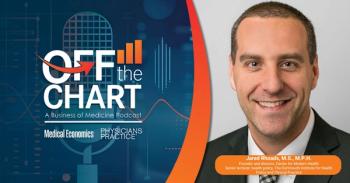
Care guidance helps physician practices achieve health equity
Health equity metrics are increasingly required in value-based care.
Words and phrases like “health disparities”, “social determinants of health (SDoH)” and “health related social needs” have cropped up all over the healthcare spectrum in the last twenty years, but now a new emphasis on actually addressing the root causes that these phrases describe is driving changes to reimbursements and quality metrics. In turn, health equity priorities are impacting the financial and operational performance of physician practices. In many cases, the federal government has led the focus on health equity metrics, such the Centers for Medicare & Medicaid Services’ (CMS) adoption of
As the financial success of physician practices is becoming more dependent on meeting new metrics in
Social determinants of health impact health equity
Research into how social, cultural and individualized factors related to motivation, financial resources and health literacy has accelerated, and groups like
Furthermore,patients at-risk of problems embedded in SDoH frequently require amplified levels of activation and monitoring beyond the provider’s traditional focus on clinical care and instructions.
Care guidance is helping tackle practice management challenges
Amid these mounting pressures, more and more physicians are taking a more proactive approach to tackling non-clinical issues associated with SDoH, realizing how important these factors are to the patient journey and to the management of their practices.
Increasingly, providers are looking into non-clinical care guidance as an extension of their clinical team as an efficient way to proactively identify practical issues and resolve non-clinical barriers to care, including those associated with SDoH, such as information gaps, transportation needs, financial concerns and emotional and familial issues that patients commonly experience. Care guidance also ensures that potentially relevant clinical information is escalated to the proper clinical care teams, alleviating time, costs and resource capacity problems, while at the same time enabling clinical staff to focus on clinical issues within their scope of practice and level of licensure. This is where care guidance provides extraordinary value, enabling medical groups to deal with rising operating costs that are fueled by the costs of labor recruitment and retention and the critical
Care guidance teams are ideally positioned to work with patients to find and solve non-clinical issues and barriers that lead to non-compliance. By itself, this improves the patient journey and the likelihood of the best clinical outcome. In addition, by using proactive symptom assessments and structured workflows and patient interactions, care guides can find potential clinical deteriorations earlier, and by following pre-defined escalation paths the care guides can ensure that relevant clinical issues are promptly directed to the right member of the clinical team.
How care guidance works
Today’s care guidance programs consist of several components centered on specially selected and trained non-clinical care guides who are tech enabled and provide an essential human touch to supporting patients. When programs are implemented thoughtfully, care guides are equipped to establish deeper personalized relationship with patients and their families and as a result help achieve remarkable outcomes. Serving as the main patient point of contact, this peer-to-patient connection can activate un-motivated patients and lower resistance to them sharing personal information and engaging in the process of their care.
While the human element of care guidance is a key aspect of patient interaction,tech-enabled data intelligence supports care guides with valuable and critical insights. Following structured, AI-assisted workflows, care guides work to identify SDoH factors that pose the most risk to patient care in advance of becoming an issue and barrier to care.
AI and machine learning anticipates patient needs based upon disease and condition-specific protocols that enable care guides to deliver an unprecedented level of vital, just-in-time communications.This supplements patient intake forms and electronic health record (EHR) systems, which are not specifically designed to uncover SDoH issues and facilitate the kind of resolution workflows that are needed when addressing health equity.
Supports national organizations aimed at equitable care
Policymakers, regulators and payers play a critical role in setting standards for measuring the efficacy of health equity initiatives with reimbursement strategies that incentivizes equitable care. The newly formed
These changes are also evident in the Social Need Screening and Intervention (SNS-E)
Care guidance also aligns with the Joint Commission National Patient Safety Goals (NPSG) standards, specifically
Value of care guidance for all shareholders
Care guidance is helping physician practices to deliver on health equity priorities through an enhanced patient care experience with lower total cost of care. The addition of a care guidance solution beyond legacy navigation is a truly efficient and effective approach to tackle ‘whole’ person health with tangible and measurable results for decreasing avoidable deterioration and reducing both unnecessary utilization and rehospitalizations.
Nearly
Craig Parker, JD, CPA, CEO,
Newsletter
Optimize your practice with the Physicians Practice newsletter, offering management pearls, leadership tips, and business strategies tailored for practice administrators and physicians of any specialty.










